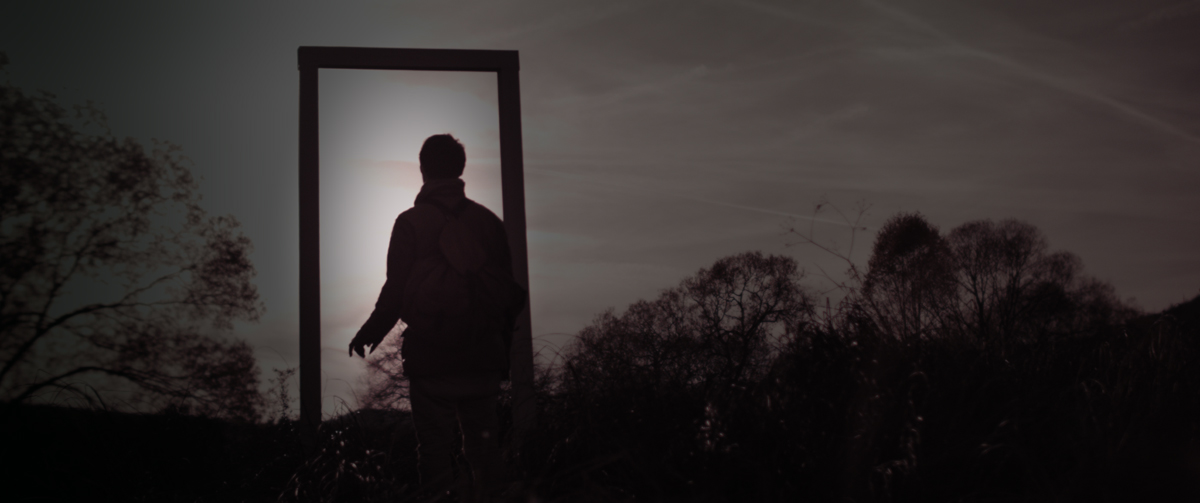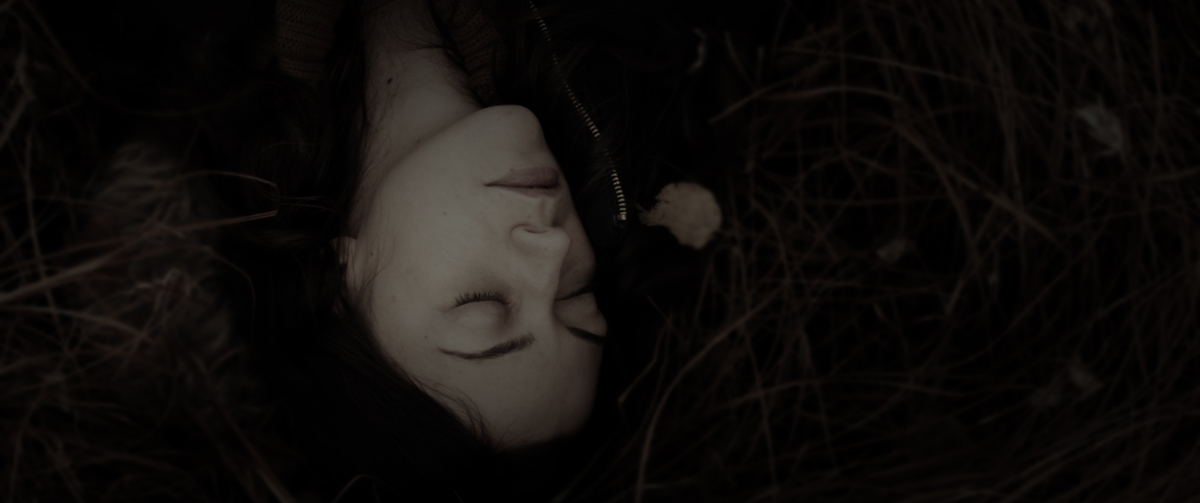A FILM BY VIKTOR GAsIc
THE FOREST
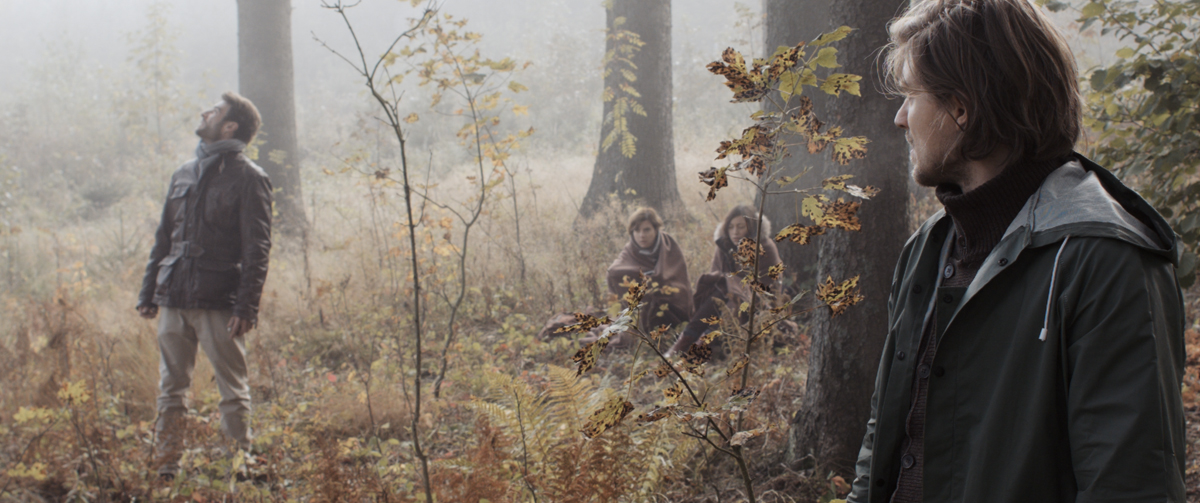
SUMMARY
Two couples and their children go on an excursion into the forest. They are young, successful and well-set parts in today's social-political establishment. When their children disappear in a storm, the entire construct of their friendship starts to crumble. Very soon, their bourgeoisie façade falls and the four turn into the profile of a lost culture. What follows is an odyssey through the forests that turns more
and more into a journey into the metaphysical. The story is told in fragments and out of chronological order. The forest and the film imagery act as a poetic expression of the inner mind, creating the metaphorical psychogram of a lost cul-ture that desperately looking for a way out and a future. It is a poetic portrait of today's society.
„We climb into the same river
and yet it isn’t the same.
It is us, and we are not it.“
HERAKLIT
„Whom would you choose: The Devil
who will take you to God, or the God
who will take you to the Devil?“
G.I. Gurdjieff
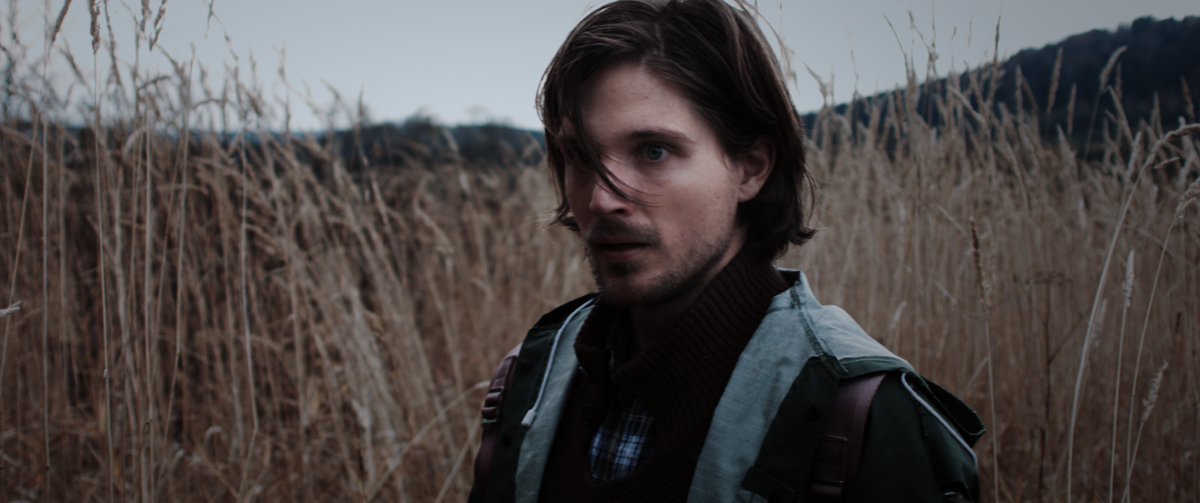
DirectORS STATEMENT
The idea behind the surface
The author about the film
I consider the movie to be contemporary, filmed prose, a kind of poetic realism. The dream of permanent progress of modernity is finally a thing of the past in today's postmodern society. We have reached a social and political vacuum universe in which the old idea has died already and the new one hasn't been born yet. Everything is relative and nothing lasts. Both protagonists, Paul and Marek, are disillusioned. One is an idealist, the other a pragmatic materialist. When the children are lost in a storm, they turn their eyes to the future, which shows us the image of a blunted society without empathy, unable to exhibit care and responsibility for oneself or for others. The story of mankind really is a tragedy, since everything comes to an end eventually. How-ever, human nature as individuals still enables everyone to reinvent themselves. We are standing at a crossroads of history. We can choose between the old "tried and tested" primitive structures of power or showing the courage to take new paths with reason and humanism.
About metaphysics in the film
When I speak of metaphysics, I don't mean the metaphysics made up by people, (and therefore personified based on the human image), which is organized and systematically insti-tutionalised similar to a McDonald's branch. To me, meta-physics is a term from ancient philosophy that refers to the hidden nature. The authenticity of a piece of art, as in a film, is in the idea. This idea is not immediately visible, but con-cealed behind the film's audio-visual surface. When I was a child, I watched films by Pasolini, Antonioni, Zanussi or Tar-kowskij, and though I didn't get those films at the time, they impressed me deeply. Their images, dialogues and atmo-spheres have remained with me for decades. That may have been one of the main reasons for me to study film. When I rewatched those films again several times after this long time, with different eyes, the moment when the idea behind the films got through to me was like a revelation. In this respect, the film as a piece of art is a metaphysical ex-perience as well. It's not the protagonists who go on a clas-sical hero's journey according to Campbell, but the watcher as an individual. In this respect, "The Forest" isn't horizontal, but vertical dramaturgy.
About film as art
Claude Chabrol said that there were two types of film-makers: There are the storytellers, who want to tell a tale, and the poets, who represent a worldview or opinion. I see film as the art that combines all other arts. In the film, Paul holds a lecture about subjective and objective art. The term of subjective and objective art was coined by Gurdijeff, one representing the surface or shape and the other that which is concealed, or the content. To turn a film into art, just using the technical tools and mastering the rules of filmmaking isn't enough. The most important step on the path to art, however, is the experience of one's own life, in which that which is learned or experienced is internally processed. Like philosophy, art is born from the individual's doubt. This is the phase of artistic self-actualisation, which has a sacral, anthropological component. It is the contemplation, since it only works in internal dialogue with nature. A piece of art is always painted in the artist's own blood. It is similar to a building that develops from nothing or an idea. The more complex the building's architecture,
the more expensive will it be. The price an artist has to pay for his masterpiece is loneliness. The more demanding and the higher his art, the fewer recipients and recognition will the work reach. Although it will protrude over the hemi-sphere like a tower of Babylon, hardly anyone will see it. That is the paradox: the highest art is often called dead art be-cause the idea behind it is only evident to few. The next question is, of course: Why do you even make art if it is not of any "use"? Then why go to all the effort to conquer that which is useless? In order to satisfy your own artistic ego or out of a need to share your own experience or opinions? Tarkowskij said a beautiful sentence: "Mankind has not in-vented anything selflessly, safe for the artistic image, and maybe the purpose of human existence actually is in cre-ating works of art, in the artistic act, which is selfless and has no purpose. Maybe that shows that we were made in God's image.“ 1 What use are experiences that we make if not that to realise ourselves and to develop further? Art as such is the highest form of being human.
About Nature
We come into the world naked, without prejudice. Right after we have opened our eyes, preproduced "clothing" is waiting for us in the form of nation, religion, culture or social status. We put them on and play the game of life. Life becomes a carnival, a political farce. We wear these clothes. Some even die for them, without ever having wondered: "Is this really me?" Our ego thus becomes the driving and self-destructive force of life. All people actually are idiots deep inside; they are idiots because they neither know the actual reason for their existence nor will they ever learn it. They are thrown into this world and are lost as individuals from the beginning. They desperately cling to society in order to find a place and get recognition. In the end, there isn't much left
to do but to abandon themselves to the river of life and let the water carry them. Paul and Marek could hardly be any more different, and yet the line that separates them is marginal. It depends on the respective perspective from which they are viewed. One believes in what he has, and what he wants to have, while the other believes in who he is or who he wants to be. It is only about having and being. Nature is surrounded by bipolar forces that move in constant change. The two currents that merge into one at some point are the living dialectic of nature. It is the greatest challenge of life to let go of everything in order to find one's own concept and to stay true to it. Rarely have people conquered their egos and overcome themselves.
About the possibility of utopia today
Utopia as a perfect society is the home of art. It is the perspective from which artists view the world. Only by comparing it to reality is a piece of art given truth and meaning. This is also the reason why almost all art is critical. The artist's view was once focused on his direct society. Now, in the global era with its media presence, it is the entire world. All of us are turning in the same circle. Everything is connected.
Since the beginning of the world, mankind has pursued a path into a better future with ideals of equality and justice. The vision of a better future was part of social life; it was the dream of a free world. Since industrialisation in the middle of the 19th century, the technology development of the modern era and the philosophical enlightenment of the 18th and 19th centuries, it seemed that the utopian ex-pectation of the perfect world was just within reach. This sociallyidealistic continuum was broken and has stagnated in the last 30 years. We are at a kind of evolutionary crossroads; either we will continue following the old path of social-Darwinist mutual exploitation or we will start down a new path of a fairer and optimised global economy that will integrate not only all of mankind but also nature. History teaches us that mankind is only able to find a new and evolutionary path after a great disaster. Apart from natural disasters that happen without human contribution, there are disasters that humans have caused on their own. These include the economic catastrophe of the 1930s. We know that it spread from America around the world in a Domino effect. We know that that economic crisis ended in a World War. Founding the United Nations right after the war in 1945 may have been the best lesson mankind has learned from this. It was an idea that is now considered the pioneer of today's marked globalisation. Like the economic crisis of 1929, the crises of 2008 and 2010 are also man-made crises.
One of the tasks of art is to draw attention to the problems in the world. The task of politicians is to solve them. It's not that global politics are managed by the smartest persons, i.e. the scientists and/or humanists, i.e. sociologists and philosophers. Quite the opposite: It's the common people, the leading oligarchs or the egotistical dictators obsessed with power who characterise today's political climate. If we look at the past, we will see that this is not a new development. Their clothes and haircuts or the names of institutions may have changed over time, but they are still the same faces and the same organisations that shift power towards each other. The democratic carousel rarely turns only forwards: there's one step forward and the next elections take us two steps back again.
The paradox par excellence in the banking crisis a few years ago was that those whose capital gambles caused the crisis were the same parties chosen by politics to stabilise the situation using tax money from the state. Instead of putting the money streams under social control thereafter, everything has returned to the previous state. Because of this, we can speak of a regression instead of progress in socially-political respect.
The ideals of the French Revolution and Enlightenment have been corrupted; the ideals of the communist revolution have been betrayed. In this respect, Marx is right when he claims that all previous revolutions had only shown one thing: That much can be changed, but human nature cannot.
The total collapse of all utopian ideals is connected to the rise of unfettered capitalism as the only accepted, global political and economic system. We are living in unprecedented wealth today. The consumerist prosperity on one side is misleading, however. The frustration and resentment of those cast aside on the other hand can trigger an avalanche one day. On the one hand, groups are increasingly moving into the third world, in order to spread at the expense of the natives and on the other hand, even though there are enough means and technology to solve all problems of food and water scarcity in the world within 24 hours, those in power are not interested in this because it would bring barely any profit. As a consequence, the third world is migrating away because it has hardly any free living space left. Almost everything is subordinate to profit: water, as well as the seas and forests are commercialised. This conversion of values may be expanded to any level of social life, no matter if in politics, sports or art: He who offers more wins.
The neoliberal system of the global free market according to the Chicago School turned out to be a primitive system of economic cannibalism at the latest after the second banking crisis in 2010. The larger group takes over the smaller one. In other words: the larger fish eats the smaller one. The survival strategy of the neoliberal free market is not far from the "wilderness survival strategy". In order to prevail in society, humans are "dehumanised". A parable on this can be found in Greek mythology, in the myth of Cronus who eats his own children because he fears for his rule. Without social laws, there will be injustice and inhumanity, just as in the wilderness, where daily survival is determined by the law of greater strength. The problem is also that we charge the same economic structures and therefore the same people who have caused a problem with fixing the problem. Neither politics nor the economy have changed, because none of the originators has been held accountable and none of them is willing to admit their mistakes. In the same way that the Pope and the church stood above the state in the Middle Ages, the banks do today. In the end, this leads to
managers and the financial industry still collecting dispro-portionately high bonus payments at the expense of tax payers. There is a social tension field, since the rich grow richer and the poor grow poorer. According to the relief organisation Oxfam, the richest 1 percent of the global population will own more than the remaining 99 percent next year (2016). The 85 richest people on earth together will own as much as the poorer half of the global population together – that is about 3.5 billion people. The basic social orders of a civilised society, such as labour rights, health insurance protection, training, studies and pension insur-ance increasingly fall victim to such "capital rescue cam-paigns". For example, universities in Great Britain are no longer subsidised for humanities because, it is said, these do not increase productivity (of private companies, that is). 2
The unfettered capital has been released from all social responsibility; new methods for bypassing the rules of fair play seem to spring up all the time. The true driving force of our society today is still based on social insecurity and existential angst. They are the "archetypical" primal motives. Are we able to learn from history in order to develop further, or are we still bound to the egotistical primal instincts of our nature? Social acceleration of the postmodern era has in-creased these fears even more. The continuous technology development, social conversion and political adjustment have made man even more a means to an end. Production increases in order to increase consumption, in order to increase production. I buy, therefore I am. Fair Trade, organic products and sustainable economy, veganism, vegetarianism, ethical banking systems and basic income are new utopian values of the new Consumer Democracy Generation after '68.
The matter of today's global capitalism has become rather complex. The main problem of the current era and the impossibility of a utopia is in the fact that the medium world has been replaced by the medium money as the com-munication core of society. No ideal remains stable; every-thing can be bought and sold; everything has its price. Human nature, honour, the honest character as a single individual, however, is built from the word; it is a social and mental existential essence that will, if even removed partially, cause an anthropological discontinuum, an evolutionary depression or even degeneration. It is an attack on human nature, at its innermost core, a shock treatment similar to the BSE disease in cows that have been fed animal meal. There is a disillusioned climate caused by a nihilist vacuum in which any utopia has turned to abstraction only.
Life has changed; it has grown faster and more chaotic. God, as Nietzsche said, is long dead and buried, but his corpse lives on; it is still marketed by religious institutions or even abused by politics in remoteprovinces of the world. In the meantime, the urban areas have created a new god with computers and the Internet: the god of continuous en-tertainment. Similar to the crusades and conquests of the Middle Ages, every state apparatus with its secret services is striving to maintain and spread its own hegemony online around the world today. Some information is concealed, other parts are deliberately reinforced depending on in-terest and benefit. Media and politics work together; there is a good reason why some media moguls are at the same time leading politicians or their henchmen who show strength and market themselves like a Zampano from Fellini's "La Strada" in their own TV circus. In fact, politically speaking, no one knows what's what anymore. Konrad Paul Liessmann even said that the only program dealing with facts was the weather forecast. Everything else was interpretation and continuous entertainment.
Postmodern theory of global acceleration (according to Hartmut Rosa’s "Acceleration") 3 increasingly shows that the global-political and economic streams are lost in a similar vortex of uncontrollable markets. This leads to economic crises and no one really knows how to get out.
Mankind today needs and is trying to find a new economic system in which social control of capital is connected to social values. The Greek bankruptcy, the stock exchange crash, Occupy, Wiki-Leaks and Anonymous attacks on power structures are just some examples for this.
Man does not live up to his task of keeping the world fair. Or, to put it more optimistically: not yet. Technical progress is advancing disproportionally to human social development, which makes us limp behind in a kind of immaturity of our own making. This kind of human does not fit today's zeitgeist, where there is enough technology to solve all the elementary problems in the world over night. This shows us a paradox: technical development was driven by mankind and has got far ahead of human social-economic devel-opment. Mankind today is unable to socially and fairy use such technology developments. By not optimally using our technology, we are actually abusing it.
The way out of today's crisis requires us to overcome self-destructive cycles of economic tendencies coupled to greed and an addiction to money. It's a near-impossible mission, since mankind today would have to reinvent itself for this. Like common Fascism has found its way into politics, com-mon snobbism has found its way into art. The true, critical, revolutionary art as a utopian medium remains peripheral – but hasn't that always been this way? Creation of a new economic paradigm with social reason will remain a utopian idea for as long as mankind does not oppose its own corrupt awareness. Mankind has built these traps on its own in its thousand years of politically-economic "development".
1 Andrej Tarkowskij "Die versiegelte Zeit", Ullstein Verlag, Frankfurt / M-Berlin 1996, S. 242
2 Phillipp Mossetter "Good economy oder warum Marketing noch keine Haltung ist", Kulturzeitschrift Vorfreude Nr. 1
3 Harmut Rosa "Beschleunigung. Die Veränderung der Zeitstrukturen in der Moderne", Suhrkamp 2005
About the poetic of the movie
What is Art?
Asked "What is art?" Balzac replied: "It is nature com-pressed". Aristotle said: "Art completes what nature is un-able to put into its work, or else it imitates". According to Joseph Beuys, every person is an artist, since the greatest piece of art anyone can complete in their lives is, in the end – that person. He or she is the work as such – self-realisation as the final piece of art. There are diverse forms in which this self-realisation can manifest. Out of all the types of art, music is the most abstract and at the same time the most spiritual one. While music as such does not need a function of expression, film does. Even the most artistically de-manding films are connected to a social message, the reception of which is decisive for whether the work "reaches" the audience or not. All that means is that the work must speak for itself as an independent being not only in content, but also formally.
Whether or not everyone can comprehend this "language" is an entirely different matter again. In art philosophy ac-cording to F. Schelling, which was later partially taken over by Hegel as well as Nietzsche, Adorno or Bloch, art as a new unity of spirit and nature is the unconscious carrier of the absolute. Art is not a science, and therefore must not be unique. It must provide "eternal interpretation", "without ever being able to say if this eternity originated in the artist or rests only in the artwork"4. In addition to this, art must be more than simple imitation of nature. It must come mostly from the artist's imagination. Finally, it must not pursue any practical purpose, i.e. it should be "useless" in a mundane sense. It should be an independent "being" in itself – art for the sake of art. This would be the purest and holiest form of art according to Schelling.
„The form without content is not a hand,
but an empty glove, filled with air.“
Wassily Kandinsky
About the form of film
Art theory knows two forms: the closed and the open form. The closed form in film means a linear plot structure that works based on the rules of causality, with a beginning, middle and ending. The causative connections create a common theme that leads to the idea and the message of a work. This idea in turn can be a one-dimensional stereo-typical story, i.e. targeted solely on entertainment, or a multi-layered, e.g. psychological study or a piece of art set up as social criticism. Film mostly uses the closed form in classical mainstream and Hollywood cinema. The mainstream aes-thetic is strongly derived from or influenced by the ad-vertising aesthetic, i.e. the aesthetic is rather based on the product. There is a good reason why Hollywood uses "screening trials" in various provinces to review and pitch the film and its reception among a broad audience. The form and plot of the film is then "diluted" according to the audience's reaction to make it better consumable and thereby even more profitable. In the end, this makes the purpose of the work "less artistic" and turns it into a subject of consumer goods. From that point onwards, we can no longer speak of "film as art" but must speak of "film as goods". The watcher is, literally, only watching, since there will hardly be any intellectual challenges beyond a simple cognitive reflection. The idea will be served ready-made on a silver platter. The only thing expected of him (and the only thing left for him to do in the end), is to "bite". On the psychology of such films, Rudolf Arnheim wrote in "Film as art“: "Like a psychologist is able to uncover the structure of his patient's soul from an irrelevant dream story, these silly film stories offer material on the psychology of the average person. […] Such films offer two things for the audience to enjoy: they summon what is pleasant and good, as all people wish, and they show punishment of evil. As we will see, they work based on very petty bourgeois value standards. The fact that they nevertheless find global approval shows how widely spread the taste of petty bourgeois and backward thinking secretly is. […] Since people love what is bad and are innately stupid, someone who has the will to improve the world must enforce this will not only against external opponents but most of all against himself. This stupidity and evil in human nature is stroked by manufactured film; it makes sure that dissatisfaction does not discharge itself in revolutionary action, but dissipates in dreams of a better world. It serves what should be fought concealed in sugared pills."4
For Arnheim, such films are extremely reactionary and re-gressive. By offering the audience colourful happy-ending pills against the grey everyday life, they imprint the existing world view with its economic assumptions and order deeply in the human psyche. Even if the world was to end, it seems to be easier to survive the apocalypse than to optimise or change economic production processes.
Psychoanalytically speaking, the media have thus replaced the function churches have held for millennia as educators of the immature masses.
The open form, by contrast, has no linear narrative struc-ture. The entire construction is arbitrary and often turned into a whole from many fragments. Often, it resorts to provocation to wake the audience from its intellectual sleeping mode and to involve it actively in the work by intellectually challenging it.
Umberto Eco speaks of the "artwork in motion"7, since this is not only about multiple meanings, but also about "flexibility of form and lack of determination". Since the work and watcher are constantly in motion, the sense of essence of it all with the respective personal interpretations culminates in ambiguous interpretative plurality. It is like a "language of the spirit", since the perception coordinates for an open artwork, i.e. its causative and narrative reception, depends on the audience's intellectual horizon in the end. Peter Wuss took over the construct of an open piece of art from Umberto Eco and systematically expanded it in what is called the topic series6. Sense is not "integrated" in the film, but must be added by the onlooker, just as during everyday perception. In an open artwork, the final gist of the work should not be presented to the audience as if it was unable to think for itself. Out of sheer respect, it should be left to speak the last, concealed wisdom on its own.
The open form can be found in all spheres of art. In particular, it is known in music from composers such as Stockhausen, Morton Feldman, John Cage or in Jazz. In literature, James Joyce is known for his open art form. His novels "Ulysses" and "Finnegans Wake" can be read in different manners because their depth and ambiguity tries to encompass the entire human universe.
In the area of film, the open form is very often found in auteur cinema and independent films that are not necessarily produced based on market rule. The film "The Forest" uses an open art form as well, since the film can be read ambiguously and in various manners. For example, there is a materialistic-economic interpretation level, a psy-choanalytical interpretation level and a philosophic-meta-physical interpretation level. Nevertheless, all possible levels are still connected by the film's idea.
If I was to name the idea of the film, it would be: "The eternal quest for purpose". Many are seeking without actually knowing what they are trying to find. Everyone is looking for something different, but in the end, we are all trying to find the same thing: ourselves.
„Art is housed in the form of demands for the impossible.“
Albert Camus
Let me briefly explain the term "The eternal question for purpose": Since the days of Antiquity, there has been a wis-dom that applied philosophically and mystically alike. Ac-cording to it, not only man but everything in nature is made up of dialectic bipolarities: A kind of yin-yang. In philosophy, the problem of the duality of body and spirit continues to this day. Psychoanalyst Erich Fromm saw human nature or psyche as having two sides: "being" and "having"8. This is represented by the two main protagonists in the film. "Being" is looking for the "essence" or, in other words, the "purpose of everything", while "having" prefers to strive for material security. While the two protagonists in the film still mechanically play their social roles in their usual envi-ronment, the bourgeois facades are dropped later in the forest, when they are abandoned to nature and the course of things. What is "lost" becomes more and more apparent. Somewhere deep inside, they both feel that they really know hardly anything. Just as they are lost in the forest, they are lost inside themselves. They are complete strangers to themselves and lost. Socrates said: "A life lived uncon-sciously is not worth being lived". In that case, physical death would be the only evident proof that we have lived. Dying "unborn" is the saddest fate a person can suffer. This way, the intellectual adventure through life morphs more and more into a suffering search for purpose.
Following the prologue, which is a miniature of the entire thing, there is the narrative that becomes a reflection on life. The narrative line splits at the time where the children disappear and the protagonists are lost in the forest. From then onwards, the setup breaks up as well. There are multiple fragments of "being". These fragments are "char-acter features" or "theorems" of the respective characters, their deepest characteristics regarding the world and social environment. These fragments are the inner portrait of a society – its psychogram.
The following names clarify how far form becomes content here: The form of fragmentary narration fits the spirit of our times and a globalised and yet scattered world.
Analogue, linear reception of life as something continuous or smooth is rarely possible anymore today. Human nature is setting out onto new terrain to which the old spirit still has to adjust. Since we are constantly interrupted by advertising, emails, WhatsApp messages or Twitter, our actions are now patched together out of many fragments. Our thinking is scattered everywhere. We are everywhere, except where we actually are. The acceleration of technology in the service of consumption and profit determines the speed of life in a perpetuum mobile of consumption, profit and continuous entertainment. Anyone who still wants to join in and secure a place in the sun has to hurry.
Burnouts, depression, estrangement, are side effects of this objectification of the world. From a certain point onwards, any real reference to life is lost. The world is mutilated and turns into a dead subject. The absurd thing about this is that the more we intensify life, the faster we turn our hamster wheels, the more we become estranged. Life intensity can only be increased up to a certain point, after which we reach a dimension of rapid standstill subject to a total immunity against any type of empathy, where nothing matters anymore. We shout into the forest, but no one can hear us. The world has long turned into a mere simulation of reality. Albert Camus says": "The absurd is born in light of the fact that people cannot help but shout into the world – and will only experience its silence." This fear that the world around us will disappear, that we lose every reference to the world, is ever-present in the spirit of today's time.9
When modernism is viewed as the revolutionary path into the whole, the utopically absolute, Post-Modernism is the lost path that splits up into multiple directions on a crossroads. The fragments scattered around the mind are waiting to be re-composed, similar to the rebirth of Platonism in Christianity or Antiquity in Renaissance10. Modernism may have been declared dead and withdrawn, but continues to live in the scope of Post-Modernism, though not as a whole or an independent spirit, but in the form of many overgrown pathways of a forgotten world.
Since our perceptions were analogue continuous linear and smooth receptions of narratives for millennia, what we experienced as the great depressive immaturity today is an evolutionary adjustment to the new, estranged circum-stances of the digital, fragmented lifestyle.
In the course of the film, the narrative dramaturgy leaves its horizontal course and therefore puts both the narrative and dramaturgy into a vertical perspective that strives to find the highest "self" and ends in this. The highest self is no longer placed next to the sphere of dialogue and text, however, but rather in the poetic abstraction of images and music.
Thus, art as abstract essence of life becomes the highest form of being. This highest position, no matter if we want to call it insight or self-realisation, however, we cannot hold forever. We will degenerate and must work ourselves back up to that height anew every time, like Sisyphus. The epilogue or the last poetic image brings us back to the prologue in a full circle, answering the question about the purpose of life with a counter-question: "To what extent does man actually exist if he can barely perceive the essence of being?"
The eternal search
04 F. W. J. Schelling: Texte zur Philosophie der Kunst, Reclam, Stuttgart 2010, S. 112
05 Rudolf Arnheim "Film als Kunst", Carl Hanser Verlag München 1974, S. 194-195
06 Umberto Eco "Das offene Kunstwerk", Suhrkamp 13. Auflage, 2016, S. 42
07 Peter Wuss "Die Tiefenstruktur des Filmkunstwerks – zur Analyse von Spielfilmen mit offener Komposition",
07 Henscherverlag Berlin 1986, Peter Wuss "Filmanalyse und Psychologie: Strukturen des Films im Wahrnehmungsprozess",
07 Berlin; Sigma, 1993
08 Erich Fromm, "To have or to be" 1976, Harper & Row, New York
09 Hartmut Rosa, in issue 02/2013 (February / March) of the magazine "philosophie Magazin"
10 "renaissance" French = rebirth
CREW
BOOK, Director, Dop
Viktor Gasic
MUSIC
Minkyu Kim
CAMERA
Erik Wittbusch
2nd CAMERA
Andreas Wiechers
Andrzej Król
landscape CAMERA
Stefanie Boike
John Watts
Visual Artist & Colorist
Sergej Romanov
ART DIRECTOR
Stefanie Boike
MONTAGE
Art Vigo
SOUND
Detlef Gutzeit
Christoph Klöcker
SOUNDDESIGN
Keiko Imamura
SOUNDMIX
Michał Krajczok
Line Producer
Kim Sun Park
Pavel Sebek
Carlos Naranjo
CAST
Marek
Daniel Fritz
Paul
René Erler
Swenja
Sabrina Strehl
Maria
Leni Wesselman
Sina
Lilith Bietmann
Phillip
Noam Bietmann
MANAGER
Klaus Bräuer
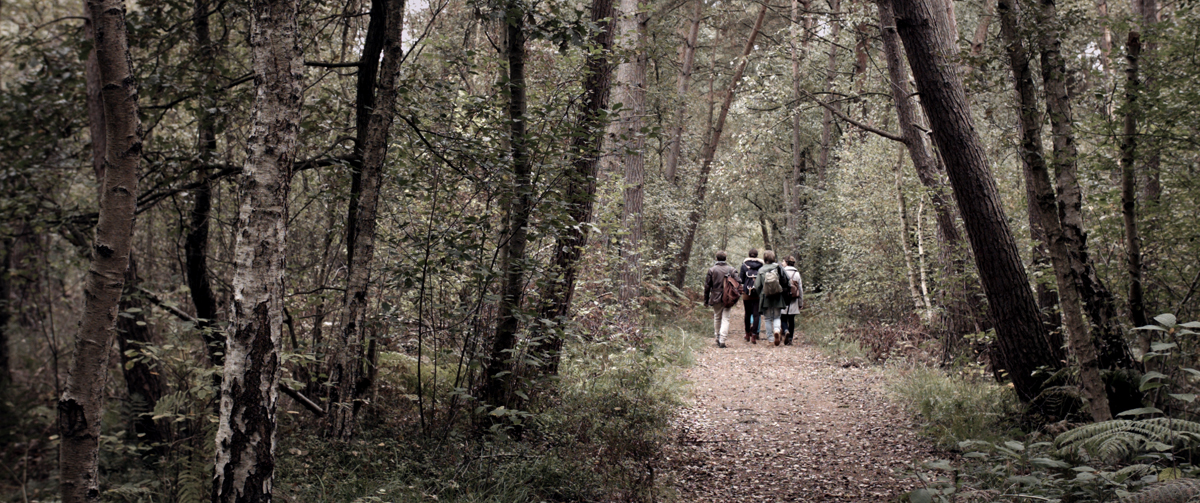
TECHNICAL INFO
Original title
Picture
Sound
Length
Der Wald
2,39 Scope
Digital surround
138 minutes
Language
Subtitles
Production
Format
German
CZ, EN, FR, GR, IT, SP
2013–2018
DCP Scope Color
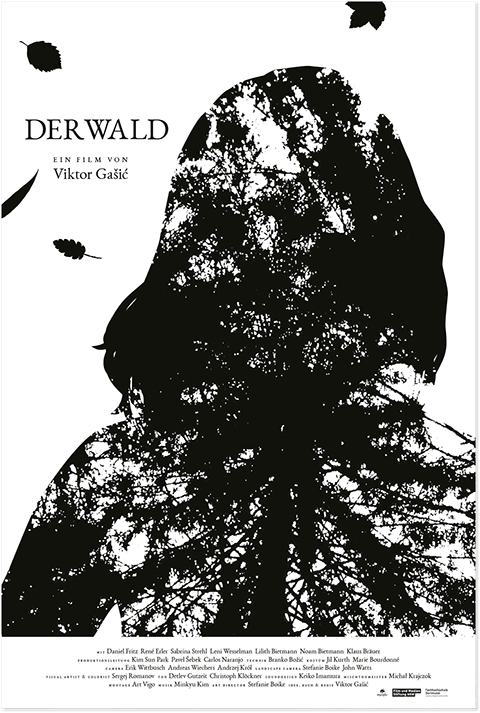
© 2018 Viktor Gasic. All rights reserved.
